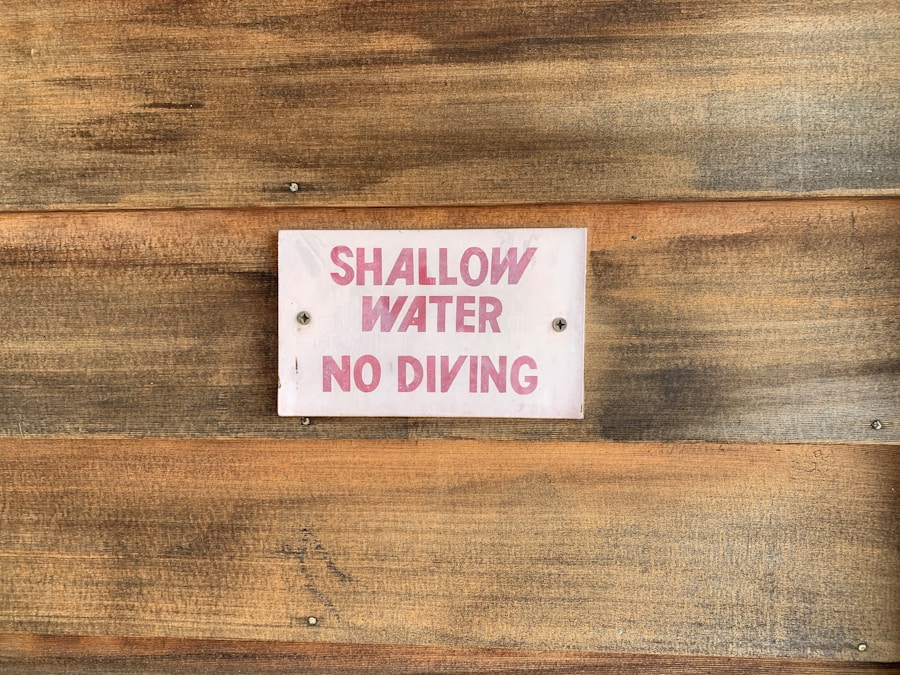Download links
How to install Exploring the Shallow Sea: A Beginner's Guide to Diving APK?
1. Tap the downloaded Exploring the Shallow Sea: A Beginner's Guide to Diving APK file.
2. Touch install.
3. Follow the steps on the screen.
Description
Scuba diving is an exhilarating underwater activity that allows individuals to explore the depths of oceans, lakes, and rivers while breathing underwater. The term “scuba” is an acronym for Self-Contained Underwater Breathing Apparatus, which refers to the equipment divers use to breathe while submerged. The fundamental principle behind scuba diving is simple: divers use a tank filled with compressed air, which they can access through a regulator that delivers air at ambient pressure.
This enables them to descend to various depths and experience the underwater world in a way that is not possible through snorkeling or swimming alone. To engage in scuba diving, one must undergo proper training and certification. Organizations such as the Professional Association of Diving Instructors (PADI) and Scuba Schools International (SSI) offer courses that teach essential skills, safety protocols, and knowledge about underwater environments.
These courses cover topics such as buoyancy control, equalization techniques, and emergency procedures. Understanding the basics of scuba diving also involves familiarizing oneself with the physiological effects of pressure on the body, including how it affects breathing and the importance of equalizing ear pressure during descent.
Key Takeaways
- Scuba diving involves breathing underwater using a tank of compressed air and requires proper training and certification.
- When choosing gear for shallow water diving, consider factors such as water temperature, visibility, and the type of marine life you expect to encounter.
- Safety tips for shallow water diving include checking your equipment before each dive, staying within your limits, and always diving with a buddy.
- Exploring marine life in shallow waters can be a rewarding experience, but it’s important to respect the environment and avoid touching or disturbing the creatures you encounter.
- Techniques for navigating shallow water environments include using a compass, paying attention to natural landmarks, and practicing buoyancy control to avoid damaging delicate ecosystems.
- Environmental conservation and responsible diving practices are essential for protecting the fragile ecosystems of shallow water environments, including avoiding contact with marine life and properly disposing of any waste.
Choosing the Right Gear for Shallow Water Diving
Selecting appropriate gear for shallow water diving is crucial for both comfort and safety. In shallow waters, where visibility can vary and currents may be less intense, divers often opt for lighter equipment that allows for greater mobility. A wetsuit or a shorty suit is typically recommended for shallow dives, as it provides thermal protection while allowing for ease of movement.
Wetsuits come in various thicknesses, and for warmer shallow waters, a thinner suit may suffice, while cooler conditions may necessitate a thicker option. In addition to thermal protection, divers should consider their buoyancy control devices (BCDs). A BCD is essential for maintaining neutral buoyancy, which is particularly important in shallow water where divers may be close to the bottom.
A well-fitted BCD allows divers to adjust their buoyancy easily by adding or releasing air. Furthermore, a reliable regulator is vital for shallow water diving; it should be easy to breathe from at various depths and should function well even in less-than-ideal conditions. Accessories such as dive computers or depth gauges are also beneficial for monitoring depth and time underwater, ensuring that divers remain within safe limits.
Safety Tips for Shallow Water Diving

Safety is paramount in scuba diving, regardless of the depth. When diving in shallow waters, divers should adhere to specific safety protocols to mitigate risks associated with this activity. One of the most critical safety tips is to always dive with a buddy.
Having a partner not only enhances safety but also enriches the diving experience through shared exploration and mutual support. Divers should establish clear communication signals before entering the water and maintain close proximity throughout the dive. Another essential safety measure is to conduct thorough pre-dive checks.
This includes inspecting all equipment for functionality, ensuring that tanks are adequately filled, and verifying that regulators are working correctly. Divers should also be aware of their air consumption rates and monitor their air supply throughout the dive. Additionally, it is advisable to avoid rapid ascents; even in shallow water, ascending too quickly can lead to decompression sickness.
A slow ascent allows nitrogen absorbed by the body to safely dissipate, reducing the risk of injury.
Exploring Marine Life in Shallow Waters
| Species | Number of Species | Depth Range (meters) |
|---|---|---|
| Corals | Over 8000 | 0-40 |
| Seagrass | Over 60 species | 0-10 |
| Sea Anemones | Over 1000 species | 0-50 |
| Crustaceans | Over 67,000 species | 0-200 |
Shallow waters are often teeming with diverse marine life, making them an ideal environment for exploration. Coral reefs, seagrass beds, and rocky shorelines provide habitats for a myriad of species, from vibrant fish to intricate invertebrates. For instance, coral reefs are known as the “rainforests of the sea” due to their rich biodiversity.
Divers can encounter colorful parrotfish nibbling on coral, schools of clownfish darting among anemones, and even larger species like sea turtles gliding gracefully through the water. In addition to fish, shallow waters are home to various invertebrates such as starfish, sea urchins, and jellyfish. These creatures play vital roles in their ecosystems and contribute to the overall health of marine environments.
Observing these organisms in their natural habitats can be a mesmerizing experience for divers. However, it is essential to approach marine life with respect; touching or disturbing these creatures can harm them and disrupt their ecosystems. Responsible diving practices include maintaining a safe distance from wildlife and avoiding contact with sensitive habitats like coral reefs.
Techniques for Navigating Shallow Water Environments
Navigating shallow water environments requires specific techniques that differ from deeper dives. One key aspect is understanding how to manage buoyancy effectively. In shallow waters, divers often encounter varying depths and may need to adjust their buoyancy frequently.
Practicing controlled ascents and descents is crucial; divers should use their BCDs to add or release air gradually while monitoring their depth closely. Another important technique involves using natural navigation aids such as landmarks or currents. In shallow waters, visibility can sometimes be limited due to sediment or plankton blooms; therefore, divers should familiarize themselves with the area before diving.
Additionally, divers should be aware of tidal changes that can affect currents and visibility; planning dives around these factors can enhance safety and enjoyment.
Environmental Conservation and Responsible Diving Practices

As scuba divers explore the beauty of underwater ecosystems, they also bear a responsibility to protect these fragile environments. Environmental conservation is paramount in ensuring that future generations can enjoy the wonders of marine life. One of the most effective ways divers can contribute to conservation efforts is by adhering to responsible diving practices.
This includes avoiding contact with coral reefs and marine organisms, as even light touches can cause significant damage. Participating in organized clean-up dives is another way divers can make a positive impact on marine environments. These events often involve removing debris from underwater habitats, which helps preserve ecosystems and protect marine life from entanglement or ingestion of harmful materials.
Additionally, divers can support marine conservation organizations through donations or volunteer work, helping fund research and protection initiatives aimed at preserving vulnerable species and habitats. Educating oneself about local marine ecosystems is also crucial for responsible diving. Understanding the species present in a given area and their ecological roles fosters a deeper appreciation for marine environments and encourages sustainable practices among divers.
By promoting awareness about issues such as overfishing, pollution, and climate change, divers can become advocates for ocean conservation both within their communities and beyond.
By understanding the basics of diving, choosing appropriate gear for shallow water environments, adhering to safety protocols, exploring diverse marine life responsibly, mastering navigation techniques, and committing to environmental stewardship, divers can enjoy their adventures while ensuring the preservation of these vital ecosystems for years to come.
If you are interested in exploring the underwater world further, you may want to check out this article on Plants vs Zombies 2. While it may not be directly related to shallow sea diving, it offers a fun and engaging virtual experience that can transport you to different worlds and environments. Who knows, maybe you’ll even encounter some underwater challenges along the way!
FAQs
What is shallow sea diving?
Shallow sea diving refers to the activity of diving in relatively shallow waters, typically up to 40 feet deep. It is a popular form of diving for beginners and experienced divers alike, as it allows for easy access to marine life and underwater landscapes.
What are the benefits of shallow sea diving?
Shallow sea diving offers the opportunity to explore vibrant marine ecosystems, encounter a variety of marine life, and observe colorful coral reefs. It is also a great way for beginners to gain experience and confidence in diving before venturing into deeper waters.
What equipment is needed for shallow sea diving?
Basic equipment for shallow sea diving includes a mask, snorkel, fins, wetsuit or rash guard, buoyancy control device (BCD), regulator, and a tank of compressed air. Divers may also use a dive computer, depth gauge, and underwater camera for a more enhanced experience.
What are some popular shallow sea diving destinations?
Popular shallow sea diving destinations include the Caribbean, the Red Sea, the Great Barrier Reef in Australia, the Maldives, and the Florida Keys. These locations offer clear, warm waters and a diverse range of marine life, making them ideal for shallow sea diving.
What are some safety considerations for shallow sea diving?
Safety considerations for shallow sea diving include proper training and certification, checking equipment for proper functioning, monitoring air supply, staying within safe depth limits, and being aware of potential hazards such as marine life and currents. It is also important to dive with a buddy and follow established diving protocols.





